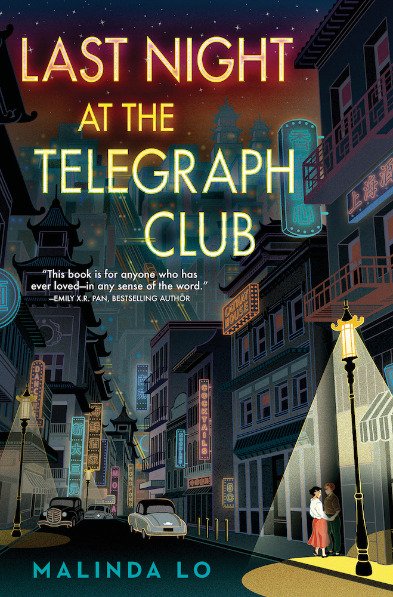
It provides readers the opportunity to learn about what this period may have been like for a marginalized group. The novel contextualizes this love for us. It ends with Lily feeling “a queer giddiness overtaking her, as if her body might float up from the ground because she was so buoyant with this lightness, this love.” Lily and Kath’s love story ends with hope, with a possibility for a future, if not a guarantee. Rather than flowery fiction, we see a snapshot of what life could have been like for a real-life Lily. I didn’t end the novel with tears of joy stinging my eyes, as I tend to after reading other more-celebratory queer romances.īut I was still satisfied. Admittedly, I was upset when that didn’t happen. I hoped that Lily and Kath would run off together, move into their own small one-bedroom in the city and spend all their nights at the Telegraph Club (the fictional lesbian bar that brings the girls together) with their new network of queer friends. However, Lily’s placement in society and Lo’s insistence on realism makes the possibility for a happy ending something one could only hope for rather than expect. The simplistic third-person figural narrative allows us to see into Lily’s mind, which questions the experience of falling in love. We watch a friendship - rooted in teenage angst - blossom into something more romantic. We see the trope of the complicated first kiss. In many ways, Lily’s story evokes the joys of YA romance novels. Where it really stands out, though, is in its balance of both historical realism and hope, a balance we so rarely see in queer stories.


For one, the beautiful and complex writing dares to compete with the prose of some of the best-selling novels published for adult readers.

The novel succeeds in many places where I feel that most YA books fail. Set in San Francisco in the 1950s, the novel tells the story of 17-year-old Lily Hu, a Chinese American who begins to question her sexuality after developing a relationship with Kath, a white girl in her class. That changed this month when I picked up Malinda Lo’s novel “Last Night at the Telegraph Club,” which won the National Book Award for Young People’s Literature in 2021. Since then, I’ve tried to reignite my excitement surrounding the genre that inspired me to fall in love with reading, but I haven’t been able to do so since middle school. Throughout seventh and eighth grade, I consumed YA novels as if my life depended on it - at least two a week at my peak. It’s been a while since I exited my young adult literature phase.


 0 kommentar(er)
0 kommentar(er)
